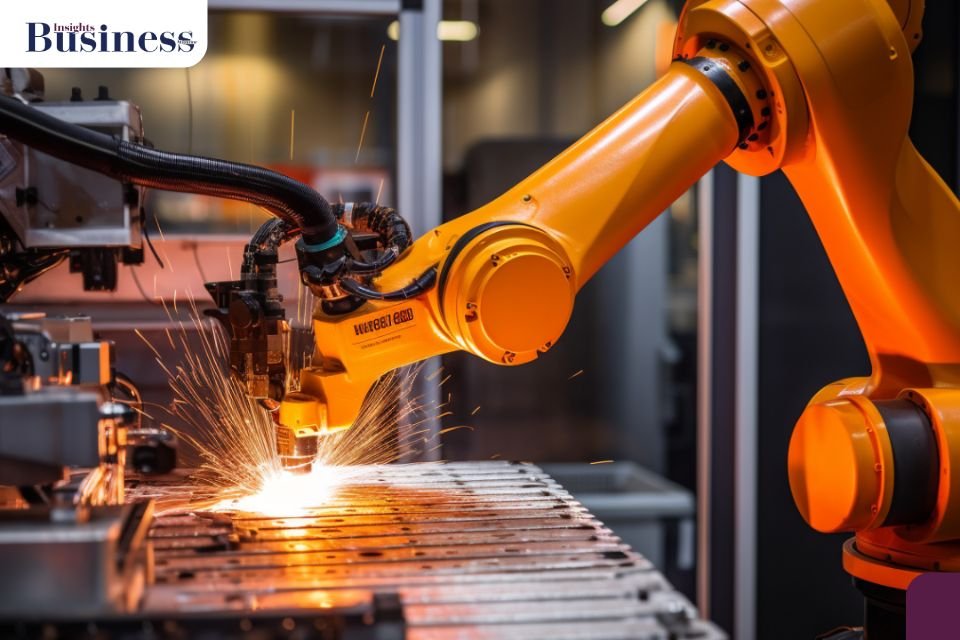In today’s rapidly evolving technological landscape, robotics is no longer just a futuristic concept; it is a transformative force reshaping industries worldwide. From manufacturing floors to healthcare, agriculture to retail, robots are driving efficiency, enhancing productivity, and unlocking new opportunities for businesses of all sizes. For small and medium-sized enterprises (SMEs) and large corporations alike, understanding the implications of robotics is crucial to staying competitive in the modern market.
The Rise of Robotics
The global robotics market has seen exponential growth in recent years. According to the International Federation of Robotics (IFR), the industrial robotics market alone is expected to grow by double digits annually, driven by advancements in artificial intelligence (AI), machine learning, and sensor technologies.
The affordability and accessibility of robotic systems have been game-changers, making it possible for even SMEs to integrate robotics into their operations. These technologies are no longer confined to high-tech laboratories or large-scale factories—they are being adopted by industries such as logistics, agriculture, and retail.
Key Applications of Robotics
- Manufacturing and Automation
Robotics has been synonymous with manufacturing for decades. Industrial robots excel at repetitive tasks, such as assembly, welding, and painting, with a level of precision and speed that humans cannot match. These robots not only enhance productivity but also improve workplace safety by taking over hazardous tasks. - Healthcare Innovation
In healthcare, robots are transforming surgery, rehabilitation, and patient care. Surgical robots enable minimally invasive procedures with higher precision, while robotic exoskeletons are aiding in physical therapy and mobility for patients with disabilities. - Agriculture
Agricultural robotics, or “agribots,” are addressing challenges like labor shortages and sustainable farming. Automated systems can perform tasks such as planting, weeding, and harvesting with minimal human intervention, increasing crop yields and reducing waste. - Retail and Customer Service
Retailers are adopting robots for inventory management, order fulfillment, and even customer service. Autonomous robots can navigate store aisles to scan inventory, while humanoid robots are being employed to interact with customers in innovative ways. - Logistics and Warehousing
Robotics is revolutionizing logistics with autonomous mobile robots (AMRs) and drones for package delivery, sorting, and warehouse management. These technologies are making supply chains faster, more efficient, and more reliable.
Benefits of Robotics for Businesses
- Increased Efficiency: Robots can work tirelessly around the clock, reducing downtime and ensuring consistent output.
- Cost Savings: While the initial investment in robotics may be high, the long-term savings from reduced labor costs, minimized errors, and enhanced productivity outweigh the expense.
- Scalability: Automated systems can be scaled up or down to meet changing demands, providing businesses with flexibility.
- Enhanced Quality: Robots perform tasks with a level of precision that minimizes defects, leading to better product quality.
- Improved Workplace Safety: Robots can take over dangerous or physically taxing jobs, reducing the risk of workplace injuries.
Challenges in Adopting Robotics
Despite its numerous benefits, the adoption of robotics comes with challenges:
- High Initial Costs: Many SMEs find the upfront investment prohibitive, although financing options and leasing programs are emerging to mitigate this barrier.
- Skill Gap: Businesses need skilled personnel to operate and maintain robotic systems, highlighting the importance of workforce training and upskilling.
- Integration Complexities: Integrating robots into existing workflows and legacy systems can be technically challenging.
The Future of Robotics in Business
The future of robotics is exciting, with advancements in AI, 5G connectivity, and collaborative robots (cobots) paving the way for smarter and more adaptable systems. Cobots, in particular, are expected to see significant adoption due to their ability to work alongside humans safely and efficiently.
Moreover, robotics will play a crucial role in addressing global challenges such as climate change and aging populations. From sustainable farming practices to elder care, robots are set to make a meaningful impact on society.
Conclusion
Robotics is no longer an optional innovation but a strategic necessity for businesses aiming to thrive in the modern era. For SMEs and large corporations alike, investing in robotics not only drives operational excellence but also creates opportunities for innovation and growth.
As robotics continues to evolve, businesses must stay informed and agile to harness its full potential. Whether through enhancing productivity, improving safety, or unlocking new business models, the possibilities are limitless—and the time to embrace robotics is now.

